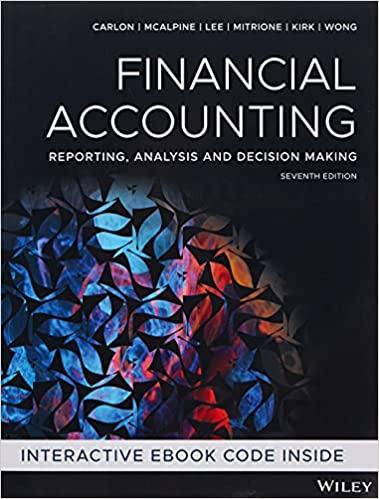Question 4 We will model the same fall in transportation costs as Question 3, but now will will account for changes to the equilibrium in the market for groceries. Use the same profit and utility functions as Question 3. Supply of groceries is perfectly inelastic, with quantity supplied equal to the land area taken up by super- markets. For example, if all land from 1 = 0 to r = 5 is used for supermarkets, then supply is perfectly inelastic at 5 units. Demand for groceries is given by P,- 12 - (a) Suppose that land use the same as in Q3b and that transportation costs have not yet fallen. Draw a supply and demand diagram to describe equilbrium in the groceries market. Label this diagram with 2 v ECON 320 HW 2 The equilibrium quantity of groceries (as a number) The equilibrium price of groceries P, (as a number) The market now experiences the full in transportation costs. This time, the land market is affected, but so is the groceries market (b) Solve for: , the new boundary between houses and supermarkets. (You should get a different answer from Q3c) The new price of groceries preu Question 3 In the city of Urbanville, land is divided between supermarkets and houses (for residents). There is a train station at r=0. Urbanville residents all work from home. Their utility of living in the city is U = 2 - R, where R is the rent they pay. These residents also have the option of moving out of the city and living far away from Urbanville. Doing so gives them a utility of U-0. Supermarkets receive goods from the central train station. Their profits are P, -21 - R. In the profit equation, d stands for the distance to the train station. The price of groceries is P (a) Draw the bid rent curves for supermarkets and houses (1), and ). (b) Find r*, such that land from 0 to " is used for supermarkets and land farther away than r' is used for houses. Transportation costs fall, such that supermarket profits are now given by P, -d-R (c) On the same dingram as before, draw the new bid-rent curve for supermarkets (V.) and find the new boundary between supermarkets and houses. 10. Question 4 We will model the same fall in transportation costs as Question 3, but now will will account for changesio the equilibrium in the market for groceries. Use the same profit and utility functions as Question 3. Supply of groceries is perfectly inelastic, with quantity supplied equal to the land are taken up by super- markets. For example, if all land from 1 = 0 to + = 5 is used for supermarkets, then supply is perfectly inelastic at 5 units. Demand for groceries is given by P = 12 - (a) Suppose that land use the same as in Q3b and that transportation costs have not yet fallen. Draw a








